You Can Take Home Dead Animals From This California Library
Check out camel skulls, starfish, or a lion’s pelt, just to know what it feels like.
I had to be careful not to jostle the large bird too much—its enormous tail feathers splayed like a fan and wobbled with every move—as I hoisted it into my van. It took fifteen minutes and a designated pulley cart, but my husband and I finally managed to navigate the feathered turkey across a busy street, past throngs of people watching with bemused delight, and into the vehicle. Though this turkey is pre-stuffed, we had no intention of putting it in an oven or a deep fryer. Instead, we planned on placing it in our living room to admire the shifting colors in the magnificent plume and vibrant gobble of a full-grown taxidermy tom turkey.
When I first arrived at the Nature-to-You Loan Library—the home of our fowl friend—I expected it to smell like carrion or harsh preservatives. Fortunately, it had that comforting nostalgic smell that accompanies many museums. But unlike most libraries, this one, nestled within the San Diego Natural History Museum, known locally as The Nat, leases a different kind of ware to the public. Instead of checking out books, you can leave with anything from a coyote encased in plexiglass to a Tupperware full of snake bones. While most commonly used by teachers and artists, these specimens are available to anyone for almost any reason. A company once checked out their mascot (an eagle) for a team party and the turkey is particularly popular around Thanksgiving.
It’s hard to focus as I meet Haylie Priest, the enthusiastic manager of this menagerie. I’m captivated, if a little unsettled, by the hundreds of eyes staring at me from the shelves of the library. I recognize a few locals, like the bobcat and quail. Others—a polar bear skull or a Galápagos penguin—are windows to far-away places I might never see. Many are frozen in time and character: a sea otter floating, a long-tailed weasel peering, a snake skeleton curling up. As Priest opens one drawer after another, a cornucopia of specimens spills out, among them a fossilized T-rex brain cast (surprisingly small) and a whale vertebrae (heavier than expected). You wouldn’t want to find yourself here at night, but during the daytime, curiosity quickly overpowers any unease at being surrounded by, to put it bluntly, a bunch of dead stuff.

Of course, dead stuff is a trademark of natural history museums, so it’s not entirely surprising to see these at The Nat. Priest tells me that the museum walls were once lined with specimens collected from scientific expeditions. However, as The Nat shifted to more immersive exhibits, some of these treasures made their way into the Loan Library.
Though many natural history museums loan their specimens to other museums, scientists, and research institutions, The Nat is one of the few to make them accessible to the general public. For a modest fee, anyone can become a member of this quirky library and lease, say, a lion pelt just to know what it feels like. Despite frequent use, the specimens are in surprisingly great shape. You wouldn’t guess some are over a hundred years old and well-traveled. But I soon found out that keeping them in such good condition requires someone with a keen eye for detail and comfort around the macabre.
“Welcome to my weird house,” says Emily Binard with a friendly laugh as she opens the door to her suburban Lake Elsinore home. Inside, animals in various stages of the taxidermy process cover every surface.
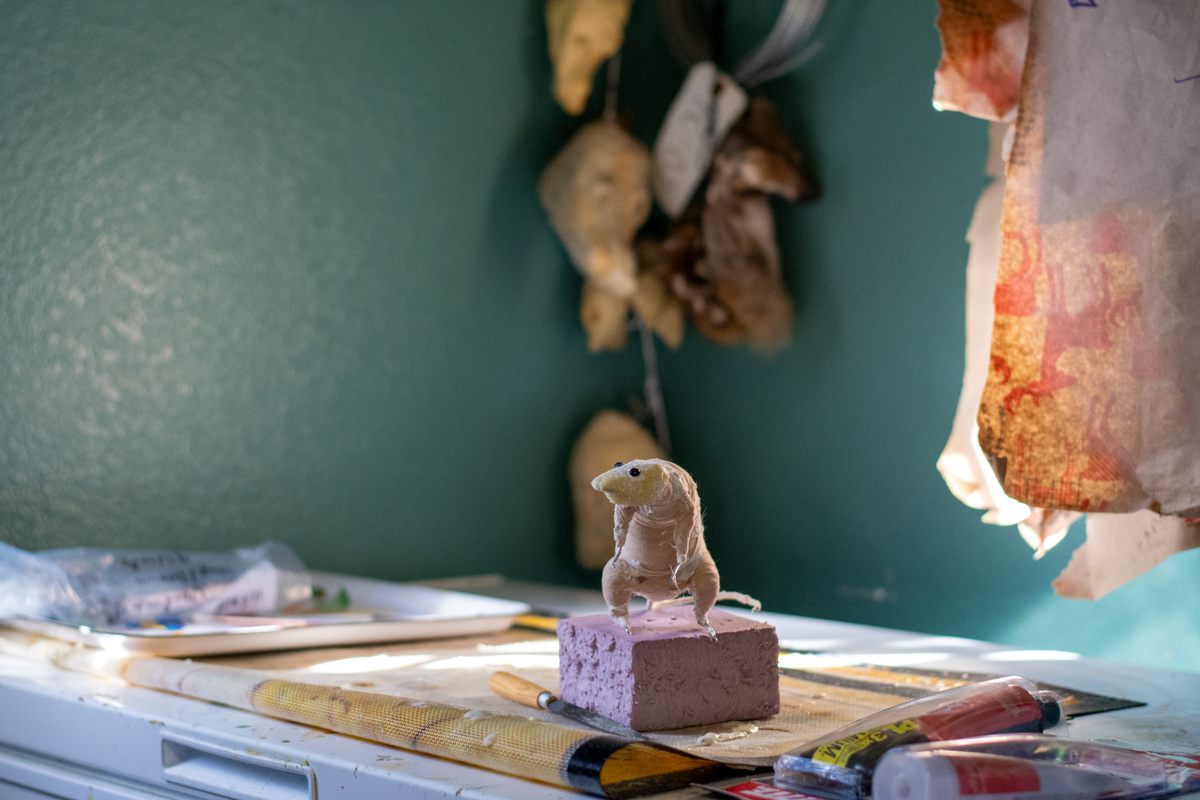
As the Loan Library’s specimens venture out into the world, the taxidermy ones tend to fade over time from light exposure. This means Binard, one of the library’s go-to taxidermists, often finds herself restoring the vibrant lifelike colors of a sunbleached weasel or bat.
In addition to restoring and creating museum specimens, her well-known taxidermy artistry also includes imaginative and fantastical creations. For Binard, taxidermy satisfies her interest in all things creative. “It’s sculpting, and it’s painting, and it’s textile art, it’s sewing,” Binard says. “It sort of encompasses all these different types of art into one thing.” Pulling open a giant freezer, she points out a few bags of frozen animals she’s working on for The Nat.
No animals are intentionally killed for the library, but the collection is growing. Some are donated by nonplussed inheritors of taxidermies, while others are recently deceased animals. The latter are often roadkill, including the two specimens Binard is currently working on: a coyote pup and a raccoon, both getting a second life. The pup will be a particularly welcome addition, as Priest says coyotes are among the more popular specimens.
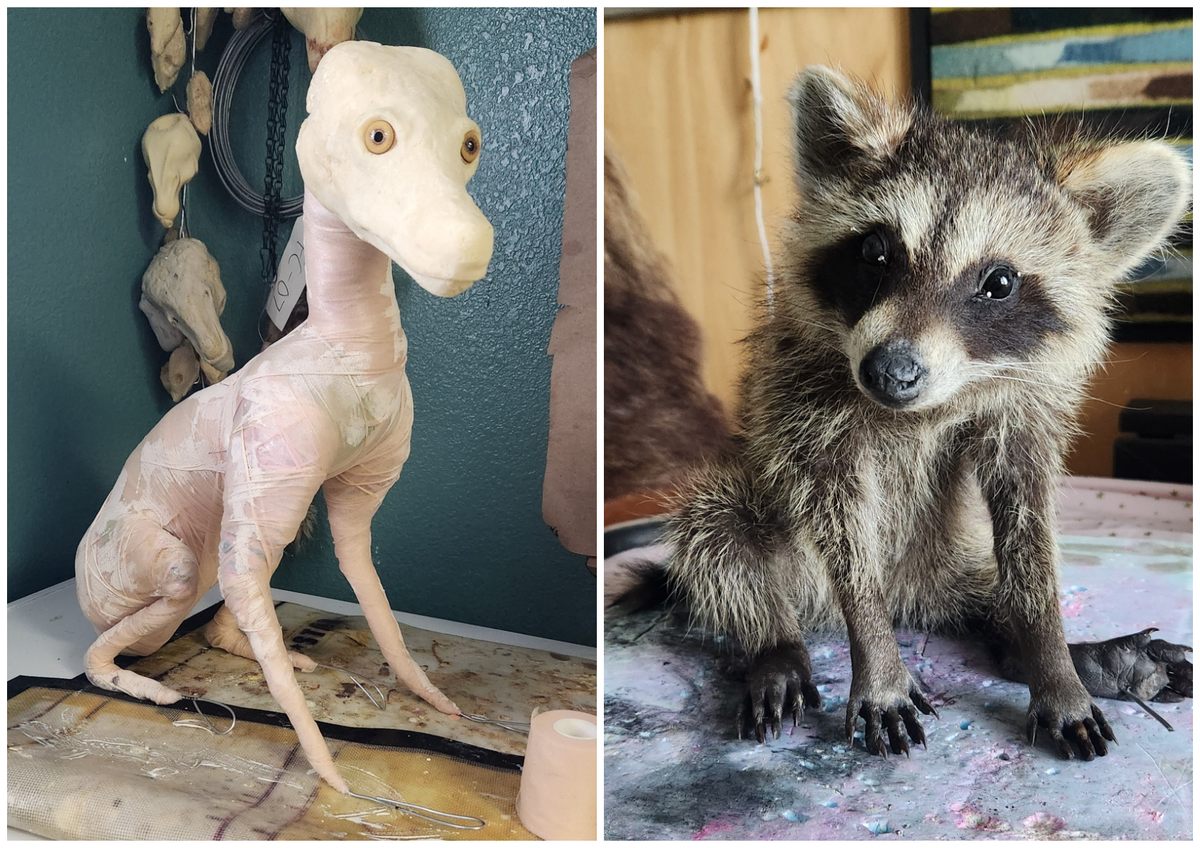
The taxidermy process is involved and not for the faint of heart. But it is a unique meditation on nature and the cycle of life and death. Taxidermists must intimately know the animals they are working on to replicate structure and look. If you were to peek inside a specimen, you wouldn’t see guts or bones. Instead, taxidermists make their own animal forms from various materials over which they stretch the processed skins.
After taking careful measurements of a new animal, Binard uses non-recyclable soft plastic wrapped in athletic tape to make what she calls the pupa stage of her creations. Beyond that, it’s a blur of steps: freezing, salting, tanning, pickling, making casts, and mounting, to name a few. Sometimes she even enlists flesh-eating beetles to clean bones or eat innards. By the time she’s done, the animal looks ready to take a breath and walk out of the room. Instead, they enter the Loan Library, where they become ambassadors for their species.
For Diego Sustaita, a biology professor at California State San Marcos, nothing compares to seeing the sheer size and glory of a golden eagle up close and personal. “That’s something that you just don’t get a sense of looking at pictures,” says Sustaita. “[These specimens] give you that sense of what these things are like in real life.”
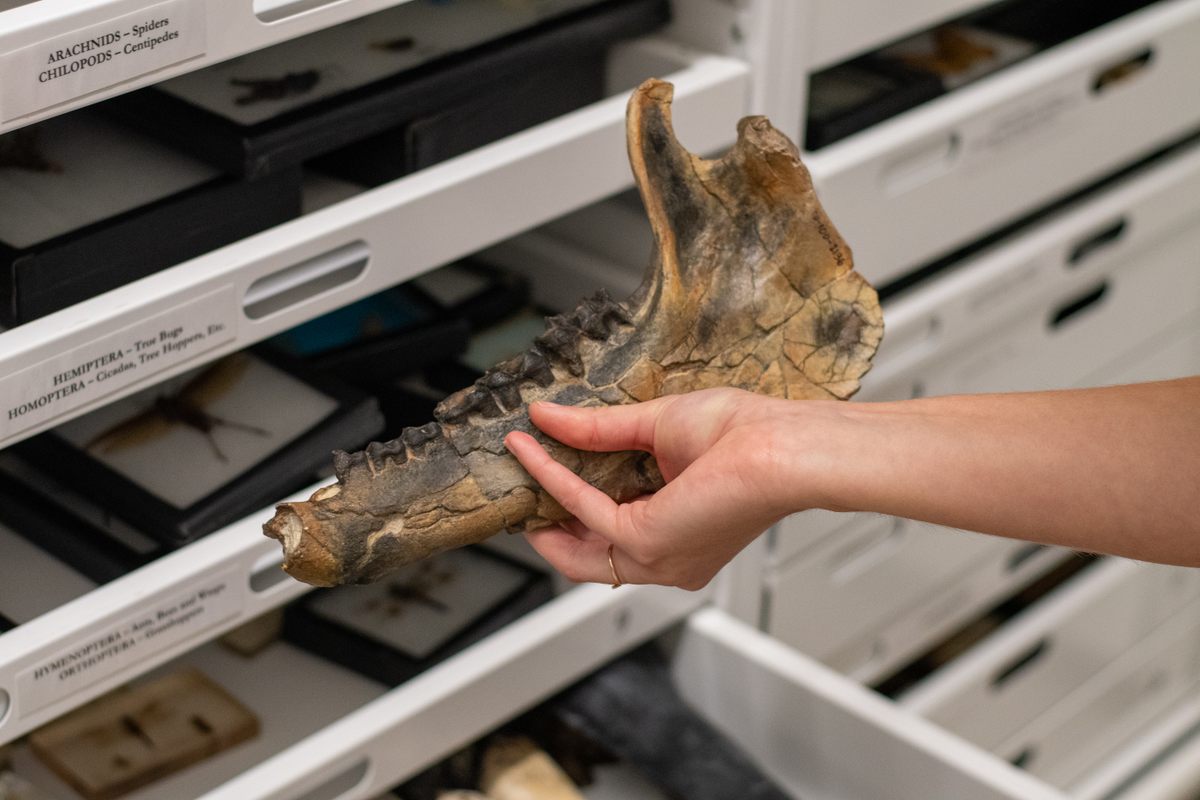
Each year, Sustaita checks out dozens of birds from the Loan Library for his upper-division classes on bird biology and anatomy. Students get to see evolutionary adaptations firsthand by looking at how the webbed feet of coots and ducks differ or how the size and shape of beaks and talons from various raptors are adapted to different environments. Sustaita says that you can tell a lot about a bird’s life by their feet: how they move around, what habitat they live in, and how they manipulate their food.
Lindsay Howett, a schoolteacher in San Diego County, says that young kids are inherently curious about the world around them, but it can be a challenge to connect her students to native wildlife. “Most of it is curriculum [about] big species like you would find in Africa or that you might see if you went to the zoo,” Howett says. “And there was nothing really local.”
Through the Loan Library, she can introduce her students to endemic species they might find in their backyard or around San Diego. Today, she uses such specimens in nearly all of her lessons, having students measure wingspans, draw pictures of animals, or write factsheets on each species. “It’s effortless to teach, because they are just drawn to the specimens,” Howett says. It’s even inspired them to find their own living specimens to observe, like when one of her students brought in a June bug they found in the park.
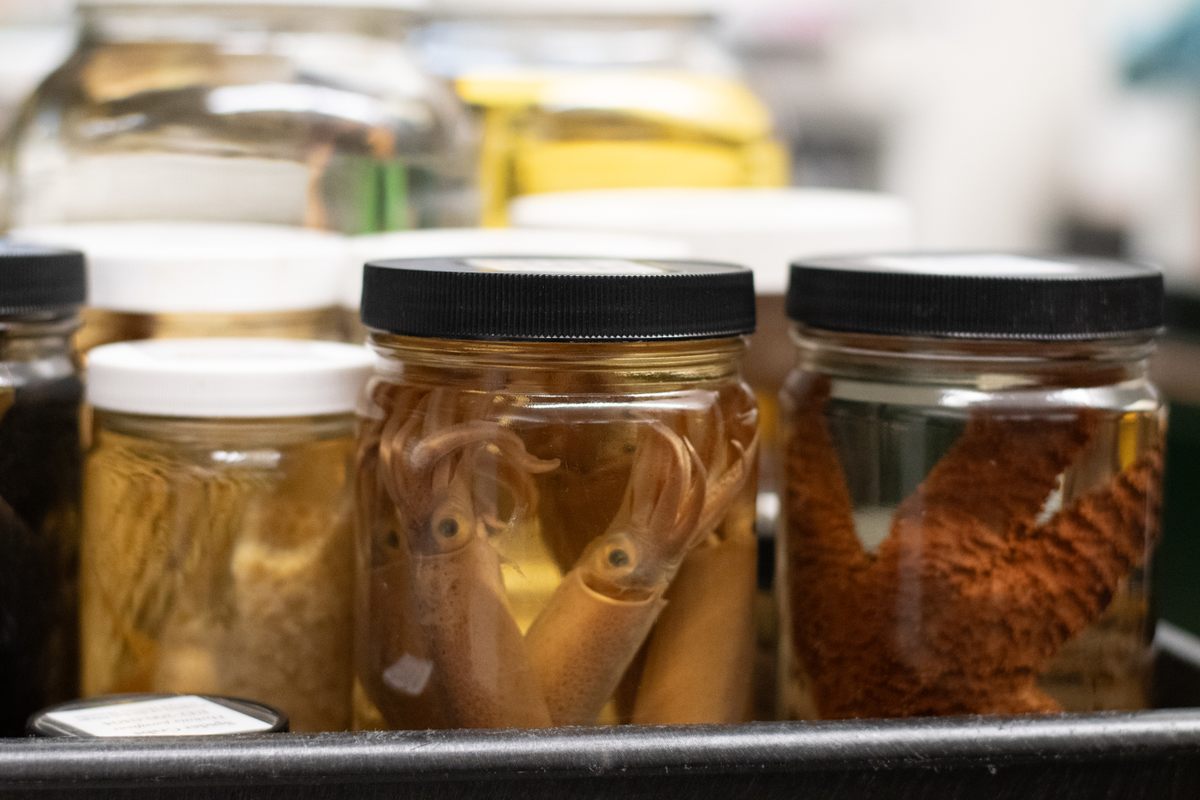
Beyond teachers, the Loan Library attracts a diverse cast with creative ideas about how to make good use of the specimens. One of Priest’s most recent members is a young boy who wants to check out taxidermy birds for a birding club he is starting at his elementary school. A local art museum rented the encased rattlesnake skeleton to accompany an exhibit on Georgia O’Keefe. And artists have used the specimens as models for sketching, sculpture, and even 3D-printed jewelry, such as the miniature okapi skull earrings that Priest wears the first day we meet.
On our way to return the turkey, its neck bobbing precariously as the cart runs over bumps and cracks in the sidewalk, there’s a line of school kids waiting to enter the museum. They yell excited questions in my direction interspersed with awe-struck exclamations of “Turkey!” when complete sentences elude them.
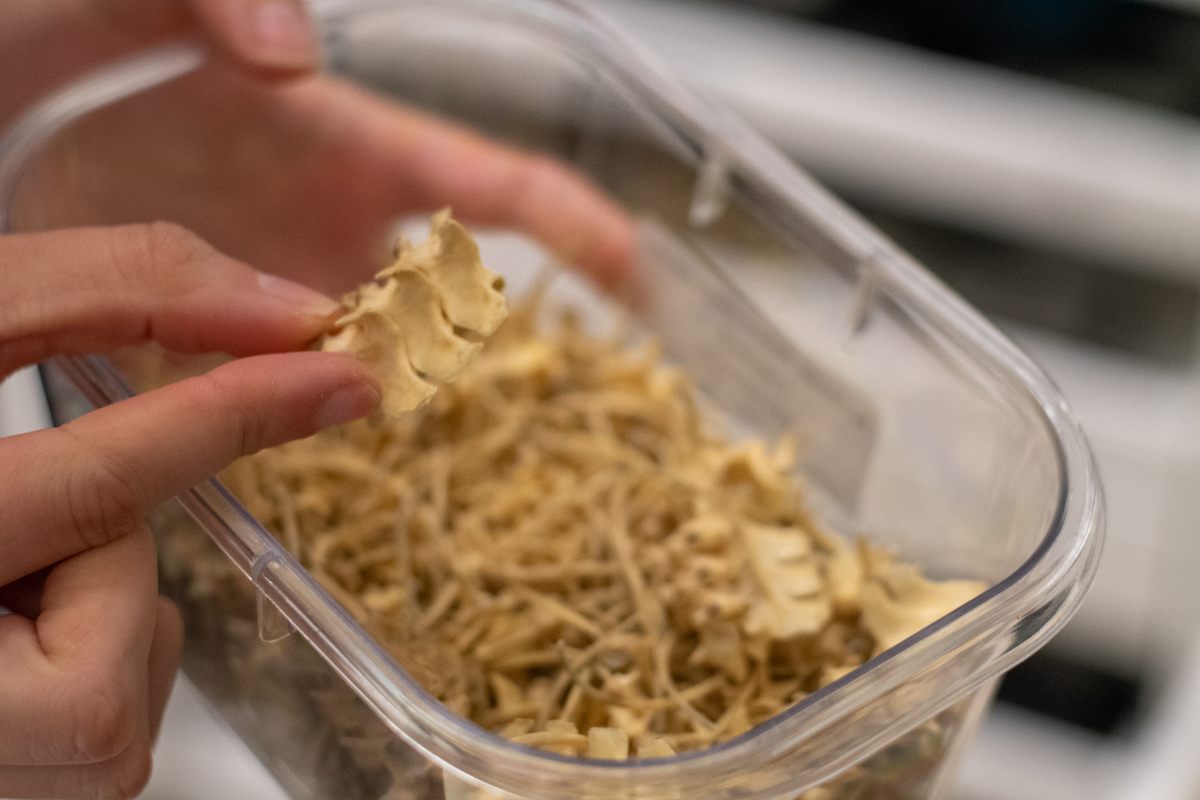
Priest tells me there are three main questions kids ask when they see the taxidermies. “Are they real?” “Did you kill them?” “Did they die in that position?” Their curiosity comes alive, even though a few sometimes struggle with thinking about a dead animal. “It’s sad to think that these animals are no longer alive and that they did die. But we’d like to say that we’ve given them a second life to be able to teach kids and teach people to appreciate the wild animals that are of their same species currently out in the wild,” Haylie says.
And with each new use, these animals are living a life longer than their natural lifespan. An animal that might have lived, at most, two decades in the wild, continues to connect people with nature centuries later.
Priest excitedly pops her head out of the library’s door as we make our way down the ramp to the Loan Library entrance. We’ve made it just in time; the turkey is being checked out again this afternoon.

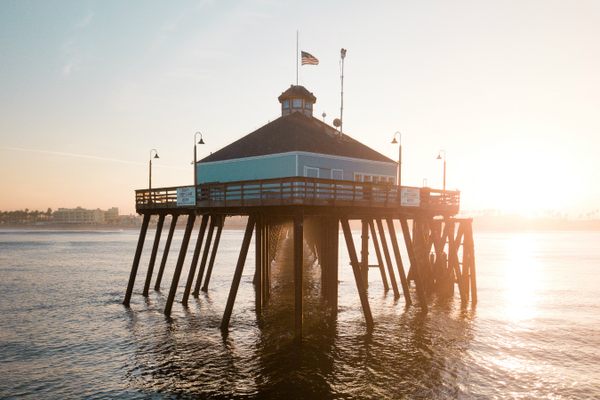
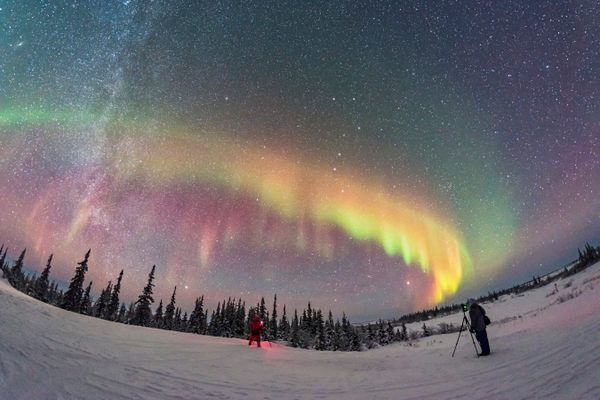
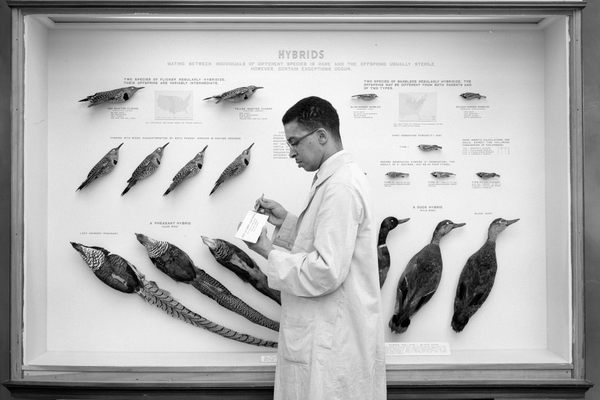




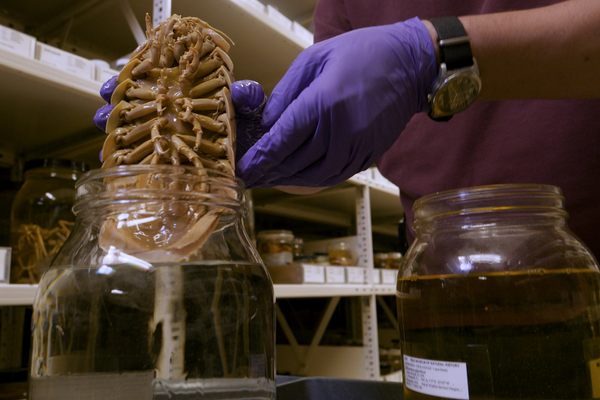





















Follow us on Twitter to get the latest on the world's hidden wonders.
Like us on Facebook to get the latest on the world's hidden wonders.
Follow us on Twitter Like us on Facebook